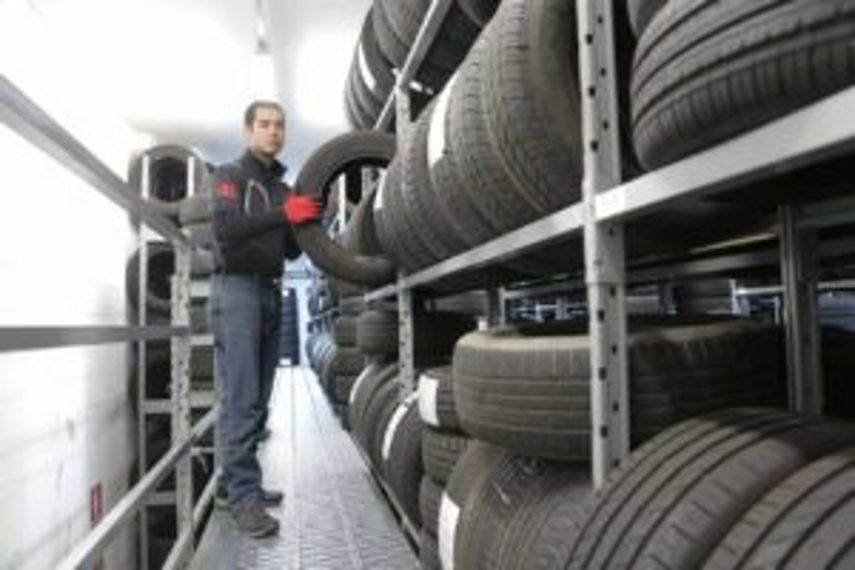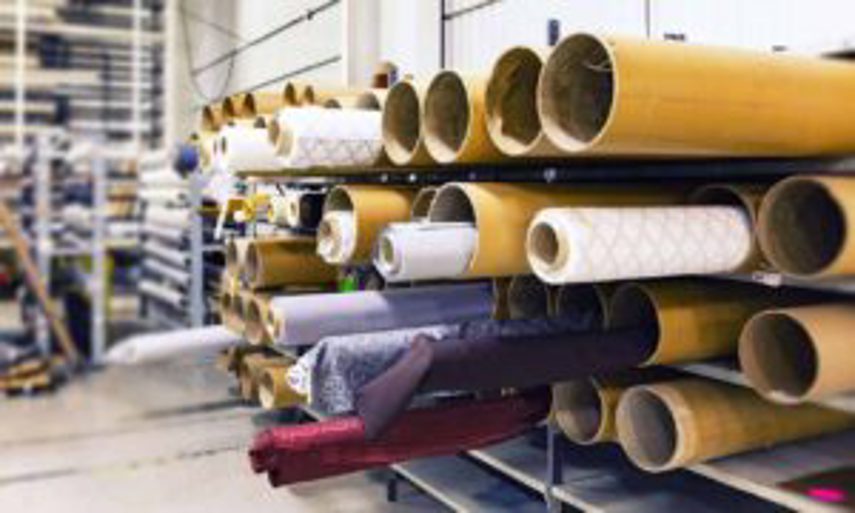
In these fast-moving days of technological advancement and economic change, a lot of manufacturers are talking about going ‘lean’. One major aspect of running a lean business is inventory reduction – that is, a reducing the amount of inventory your organisation keeps on hand at a given time.
- Read more: What is Inventory Management? Complete Guide
What is inventory reduction?
Inventory reduction is the process of reducing inventory to match reduced demand. This allows a business to cut inventory costs and avoid overstocking. It also aids in storage utilisation. Inventory reduction of some products is typically done in accordance with inventory increases for other SKUs based on spikes in customer demand.
Why do businesses reduce inventory?
There’s obviously a clear benefit of having a lot of inventory hanging around – for one thing, you’re very unlikely to stock out. But excess inventory also comes with a variety of problems.
For one thing, each item lying around your warehouses is cash that could have otherwise been invested elsewhere. There’s also the spoilage element to think about, where the longer you carry an item, the more at risk it is of expiring, getting damaged, or becoming unsellable for other reasons.
Unintended inventory excess can also be an indication of deeper problems within the business, such as poor forecasting, low sales, over-purchasing of undesirable goods, and so on.
For some businesses, reducing inventory is a small task – all they need to do is run a little leaner or cut out a bit of waste. For others, it’s about cutting inventory being held all the way back to meet customer demand. This is where you start getting into a Just-in-Time (JIT) business model, where you’re only ordering stock to fulfil orders, and inventory is kept to a minimum at all times.
 Holding excess inventory can be a sign that there are problems with your supply chain – such as inaccurate forecasting and overstocking of unpopular goods
Holding excess inventory can be a sign that there are problems with your supply chain – such as inaccurate forecasting and overstocking of unpopular goods
The advantages of inventory reduction
Reducing the level of inventory you have on hand has several benefits, including:
- Reduced costs. Every item in your warehouse represents tied-up capital. And not only do these items tie up their initial purchase cost, but also the utilities fees, staffing, and any other costs associated with running your facilities. On top of that, there’s the extra insurance cost of carrying more stock. So every time you trim your inventory, you're trimming all of those collective costs.
- Less waste. Stock is risk – the risk of damage due to an accident, the risk of perishables expiring, or the risk of damp or mould or corrosion of some kind. When you limit the amount of stock that you carry, you limit the amount of stock that might go unsold.
- More cash flow. By combining the two benefits above, you’ll see that carrying less stock means you might have a bit more cash flow on hand. This spare capital allows you to invest elsewhere in a more timely fashion, on activities like upgrading facilities, buying new software, or just improving day-to-day operations for your staff.
- Flexibility to adapt to the market. Anything can happen in the market, so it pays to be able to adapt. Cash is king when it comes to flexibility, allowing a business to quickly experiment with new ideas, fail fast, and pivot its offerings to keep up. Freeing up cash flow by reducing inventory is a way to ensure you are always able to adapt when needed.
The disadvantages of inventory reduction
There are also potential downsides to reducing your inventory, such as:
- Greater reliance on suppliers. To even think about reducing inventory – especially cutting back to a Just-in-Time model – you must be confident that your suppliers can get you what you need, when you need it. Any hiccups in the supply chain could lead to lost sales if your business can’t acquire the items or materials it needs. Supplier due diligence is vital.
- Some higher costs. While you’ll be reducing some costs, because you won’t be bulk buying as much, you may lose out on supplier discounts in this area. This could lead to individual material purchases costing more than they would have otherwise – so you’ll need to be confident that the savings offset this bump.
- Risk that you won’t meet customer demand. Lean inventory models have a bit of risk attached. You’re essentially relying on good forecasts and supplier relationships to meet customer purchases just in time, every time. So if any hiccups occur, you may not meet the demands of customers, and that could be damaging for your reputation and future sales.
 The key benefit of reducing your inventory is that you’ll cut costs – not only from purchasing less stock, but also from reducing waste
The key benefit of reducing your inventory is that you’ll cut costs – not only from purchasing less stock, but also from reducing waste
Inventory reduction techniques: 15 strategies to reduce inventory costs
Here we examine the 15 best ways to reduce inventory, with a focus on the four core areas of inventory management: Inventory planning, inventory management, manufacturing processes, and supply chain management.
1. Improve demand forecasting
Demand forecasting is the act of using historical sales data, combined with your personal knowledge of upcoming events (e.g. seasons, holidays), to predict what customer demand is going to look like.
This type of analysis is vital for any lean inventory model, so that you can plan out how much safety stock to hold and perhaps even organise purchasing certain goods in advance (but only barely in advance, of course). If you expect a surge, it means you’ve got the stock you need on hand to meet it without blowing out your carrying costs. If you expect a trough, you can reduce your safety stock feeling confident that a surge is unlikely.
- Learn more: Inventory Forecasting Explained
2. Re-evaluate your safety stock
We’ve talked a lot about lean inventory and Just-in-Time sales, but remember that every business, even a lean one, requires at least a little bit of excess inventory. This is your safety stock, and you’ll always need some as it’s generally better to have a tiny bit too much inventory than too little.
The trick is getting that safety stock level right to balance your attempt to go lean. That means holding enough extra stock to meet unexpected surges in demand, or high per-unit purchases of your products per customer.
 Working through questions like how much safety stock you really need and what products are selling best will help determine how much of each product you should have in stock
Working through questions like how much safety stock you really need and what products are selling best will help determine how much of each product you should have in stock
3. Learn your ABCs to reduce inventory
According to the Pareto Principle, for most organisations 80% of its value is tied up in 20% of its products. The question is: which of your products fall into that 20% and which don’t? That’s where you need the ABC rule.
The ABC rule is a method of inventory control that splits up your products into three categories:
- Category A items are business critical and require careful inventory control
- Category B items are of average importance and require some management
- Category C items are less important for your business and require relatively little inventory control
If you were to run out of safety stock for items in Category A, it would have a much higher impact on the business than if you run out of stock for Category C – so Category A needs a lot of attention. But that doesn’t mean you should overstock Category A items – maybe you have a reliable supply chain and even if you were to run out, you could resupply quite quickly, so you could risk running lean.
Either way, knowing how to split up your products will allow you to focus more of your inventory control efforts on the products that truly matter. This is especially important for companies with a limited time and budget.
4. Improve your data, improve your inventory management
Good data is the cornerstone of a modern business. Without it, very few types of automation or optimisation are possible – or at least they're unreliable.
Data allows you to make evidence-based strategic decisions, dispensing with the old ‘gut feel’ approach. You can combine data points to filter data by different categories, for example viewing sales by product, demographic, location, and other criteria. Or you can collect data to analyse your inventory using important metrics (see below).
But to be useful, the key is to have good data hygiene. Generally, data must:
- Sit within a central repository shared by as many functions of the business as possible. This is to eliminate the silo effect, where different systems hoard their data and others can’t use it.
- Speak the same language. To be useful, data must be able to be parsed quite quickly – at a glance is best if possible. That means the different data points should be uniform in how they are displayed. For example, instead of your database containing line items that are from the US, USA and North America, they would all be from ‘United States’.
- Only appear once. Duplicates can be quite common in some databases, depending on the software in use, and they can cause inaccuracies – in other words, two pieces of software may accidentally add the same datapoint. If you can’t automatically remove duplicates, you’ll need to go through and clean up your database every so often.
 Data will be central to your analysis of how to reduce your inventory, including key inventory performance metrics like inventory turnover and days sales of inventory (DSI)
Data will be central to your analysis of how to reduce your inventory, including key inventory performance metrics like inventory turnover and days sales of inventory (DSI)
5. Test your business against performance metrics
If you’re going to go lean, you must be able to track your progress. There are a few useful metrics here that will help you understand whether your efforts are going well – or not so well. These include:
- Inventory turnover: Calculates how quickly you sell through your entire inventory in a given period. Calculated by dividing Cost of Goods Sold by average inventory value. Learn how to calculate inventory turnover here.
- Days sales of inventory: Measures the number of days you hold a particular product before turning it into a sale. Calculated by dividing average inventory value by Cost of Goods Sold, then multiply that by the number of days in your given time period. Learn how to use the days sales of inventory here.
- Product performance (best sellers): Your top products by profitability. These are key to working out your ABCs. Calculated by looking at best sellers by actual revenue.
- Product performance (worst sellers): Your bottom-end products in terms of profitability. This is how you find dead products or slow movers. Calculated by looking at your worst sellers by revenue.
6. Centralise information with an inventory management system
Good inventory management is essential to running lean. Inventory management software, therefore, is just as essential.
This type of software is designed to take all the information you need to know about the comings and goings of your inventory and put that data in one place. That way, at a glance, you can quickly determine your current inventory level and its value, incoming stock from suppliers, outgoing stock through sales, shipment information, supplier details/relationships, and so on.
And with inventory software in place, you can easily access accurate data for inventory metrics so you can make strategic decisions informed by accurate and detailed information.
- Read more: Unleashed inventory management software
- Watch: Unleashed inventory software demos
7. Get rid of obsolete excess inventory
You might think you need to squeeze every last sale out of your inventory, but after a certain point it becomes more expensive to hold on to that stock that just isn’t selling than any return you’ll get from finally selling it.
With your inventory management software and the metrics given above, you can find what products in your warehouses aren’t moving – or find the products that are most at risk of moving too slowly, or which are entering the end of their product life cycle.
What’s the margin on these products versus what you pay for them? There will be a magic number – a certain length of time – after which it’s no longer profitable to keep hold of them. As you near that point, consider a high-discount sale, selling to a clearance retailer, looking for a new market where the product may find new life, or just scrapping the stock.
 One way to reduce stock is to offer your buyers a discount – after it's been sitting in the warehouse for some time, it becomes more expensive to hold onto than sell at a reduced price
One way to reduce stock is to offer your buyers a discount – after it's been sitting in the warehouse for some time, it becomes more expensive to hold onto than sell at a reduced price
8. Consider kitting
Product kitting is the act of selling multiple related products together as a single bundle. Gift boxes are one example, as are ready-to-order sets and pre-assembled products.
Kitting is a great way to lump together low-value or low-demand products with higher-value, higher-demand products. It could help you clear out obsolete items, or increase the value of Category B or C items by pairing them with Category A items (see the ABC method, above). This can save short-term profits while eliminating dead stock.
9. Recycle and reuse
If you take a step back and look at your entire business, what can you see that could be recycled or reused?
Being able to recycle components and/or containers may allow you to trim some inventory costs while cutting down on the amount of new inventory you need to order. It can also help you clean up inventory that’s lying around, as you’re putting it back into the sales pipeline, freeing up warehouse space for other products, and potentially streamlining your fulfilment process.
This may require you to take a look at your reverse supply chain functions, which you can learn more about here.
If you’re in food & beverage manufacturing, you’ll find ideas for recycling/reusing packaging here.
 Recycling or reusing items – including components and packaging – is another way to reduce inventory, and is appealing to increasingly eco-conscious customers
Recycling or reusing items – including components and packaging – is another way to reduce inventory, and is appealing to increasingly eco-conscious customers
10. Automate!
There are so many ways to automate processes these days it’s almost unbelievable. And we’re not just talking about expensive robots to help you manufacture goods faster, but rather software tools – perhaps combined with small hardware investments like barcode scanners or sensors – to take otherwise menial tasks and make them automatic.
Examples of simple automation that can benefit your manufacturing business include:
- Let your factory know when an order has come through
- Generate purchase orders based on current stock levels
- Track inventory locations, values and expiry dates
- Generate financial reports and data analysis
- Assign and track by batch or SKU
And a whole lot more. Each of these cuts the amount of time you and your staff spend on those tasks so they can focus more on value-adding activities, like strategy, forecasting and upskilling.
11. Use lean (Just-in-Time) principles to reduce inventory costs
We’ve used the term ‘lean manufacturing’ a few times in this article so far. If you’re not sure what that really means, here’s a quick definition:
Lean manufacturing is the optimisation of the manufacturing process to reduce or eliminate waste. The core principle behind it is that reducing waste can enable a business to cut costs, improve its efficiency and generate more value for customers.
So what is ‘waste’? Well, there are a few types, including:
- Excess inventory
- Inefficient processes
- Underutilised staff or equipment
- Over-production of a product
- Unnecessary transportation
The data you’re gathering to reduce inventory (mentioned above) will also be able to tell you if you have any of these types of waste. You’ll need to play around with different metrics and time periods, but with the right data you should easily be able to find out how much of each of the above wastes your business is producing.
In your efforts to improve your business and reduce inventory, identifying and cutting these wastes could free up more cash flow and staff time to focus on your other optimisations.
 Introducing lean principles to your manufacturing operation will lower waste, including inefficient processes
Introducing lean principles to your manufacturing operation will lower waste, including inefficient processes
12. Reduce lead times
Remember: inefficient processes are a primary example of waste. Inefficient processes can lead to idling staff and/or equipment (another type of waste), and every moment someone or something is standing around doing nothing is money lost.
But from an inventory perspective, any waiting around is also time that inventory sits in your warehouse taking up space – which also takes up cash. By reducing lead times, you can trim back these money pits and build a more efficient, fast-flowing process.
Things to think about for reducing lead times:
- What is the time lag between a customer’s order and them receiving the product? Compare that with how long it takes to manufacture the product. Is there a lot of excess time? If you can produce goods in three days, but it still takes three weeks to reach the customer, it suggests there’s an inefficiency in your handling of goods that is slowing the whole process down.
- Are you building up a lot of backorders for products? An increase in backorders could suggest that you have a problem with the supply chain, or an inefficiency in your manufacturing process that means you can’t produce fast enough to keep up with demand.
- Are you waiting around for materials to arrive so you can get to work? This could mean your Just-in-Time model has become a Not-in-Time model, and you’re not getting stock quickly enough.
13. Shorten your order cycles
Many organisations find that making frequent, smaller purchase orders is more flexible compared to the carrying costs of making large orders to fill up the warehouse. Not only does this trim your carrying costs, but the increased flexibility could allow you to adapt and pivot based on changing customer demand and market conditions.
Of course, this is a riskier strategy and must be carefully considered. As discussed above, ordering small quantities may be more expensive in the short term than gunning for bulk discounts – and you may even run into an issue of being unable to order at all, if a supplier has a minimum order quantity (MOQ). It also requires a very efficient in-house purchasing process, as you’ll be using it a lot more frequently.
 Supply chain management – including careful selection of your suppliers and clear communication – is central to managing your inventory successfully
Supply chain management – including careful selection of your suppliers and clear communication – is central to managing your inventory successfully
14. Be choosy with your inventory suppliers
Lean inventory models require very efficient processes, and this includes at the supplier end. If your suppliers can’t deliver the products you need as quickly as you need them, you’re at risk of disappointing customers and harming your bottom line.
This is a good opportunity to re-evaluate your existing supplier relationships and determine if they’re up to the challenge. Are you confident that you can purchase consistent, high-frequency orders from your partners without blowing out costs? You may need to shop around.
Another word of advice on this note: If you’re running very, very lean, you may not have the time or manpower to quality check every single product that comes into your business. This means you need to feel confident that your suppliers can provide the quality you require as reliably as possible, despite the increase in purchase frequency.
- Learn more: Supply chain management explained
15. Communicate with your supply chain partners
People have been saying it for years: communication is the foundation of any good relationship.
It’s quite common for businesses to hold excess stock due simply to a lack of communication. Maybe you feel stuck bulk ordering a supplier’s minimum order quantity, but actually you could have negotiated this at the beginning of the relationship and found a better deal. In return you may need to provide longer-term forecasts for orders to show that you’ll be a reliable customer who's worth giving a discount to.
And then there are your downstream partners – most importantly, your customers. If you make changes that increase delivery times, for example, this may harm your reputation with customers – especially if it comes as a surprise to them. But customers can be quite forgiving if they know what to expect and you communicate clearly. Open communication, therefore, may give your business breathing room in the event of any problems.
More posts like this
- Product Sourcing: The Complete Guide for Retail & eCommerce - Where you buy your products from and how you find those suppliers largely determines your ceiling for success as an eCommerce merchant or retailer. Pr...
- Why Sales Reports are Important to Inventory Management - When managing your inventory, you are always looking for ways to optimise and improve your operations. Trying to keep healthy levels of inventory with...
- Cloud Inventory Management Benefits Retailers - Learning how to manage your inventory in retail is vital as it can make or break your business. Spreadsheets are no longer the way of the forward -thi...
